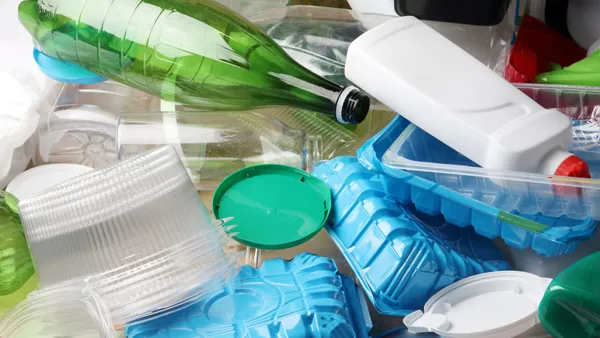Dive Brief:
- New annual figures show that Germany retained its place as the European Union's top recycler with a 66.1% diversion rate in 2015, as reported by Resource.
- Austria was second with 56%, followed by Slovenia at 54.1%, Belgium at 53.4% and Switzerland at 52.7% to round out the top five. Slovenia reported a 22% diversion rate in 2010 and has risen quickly since its largest city became the first European capital to set a "zero waste" goal.
- The U.K. dropped from ninth to tenth — due to Slovenia's sharp increase — and reported a 43.5% diversion rate to tie with Italy. At 5.4%, Montenegro had the lowest rate of the 27 countries that reported.
Dive Insight:
These numbers are positive, but only six countries are meeting the E.U.'s goal of 50% diversion by 2020 and Germany's calculation method is not directly comparable to other countries. Daily per capita waste generation in the E.U. rose for the first time since 2007 to approximately 2.88 pounds, though was down from a record high in 2002.
Many of the highest per capita generators — Denmark, Switzerland, Germany — also had the highest diversion rates. This is a factor in new efforts around food waste reduction and circular economy systems that could have large effects throughout the E.U. In countries where the diversion rate has declined, such as the U.K., more is also being done to engage with residents around their recycling practices.
For any challenges that these E.U. countries may have they are still seen as ahead of the U.S. in many respects. While the latest national diversion rate of 34.6% is not directly comparable, and questioned by some in the industry, it is still indicative of the country's stagnant progress. As more people in the U.S. industry work on "zero waste" goals and other innovative efforts they may find inspiration from some of the recycling and energy experiments happening in the E.U.













